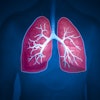
Making radiology artificial intelligence (AI) more trustworthy will be essential for the successful clinical implementation of the technology in 2022, according to Dutch informatics expert Prof. Wiro Niessen.
Which applications of AI are the most promising? How can developers leverage data collection for deep learning? What predictions can be made about radiology AI? These and other questions were addressed by panelists in an AuntMinnieEurope.com webinar held on 12 January.
In this edited Q&A article from the webinar, Niessen speaks about the challenges of effective algorithm development and the areas of special interest to him. He is professor of biomedical image analysis at Erasmus MC in Rotterdam and Delft University of Technology, founder and scientific lead of AI company Quantib (see 24 January news report), and director of the AI platform of the European Organization for Biomedical Imaging Research. He was president of the Medical Image Computing and Computer Assisted Interventions Society in 2016-2019.
 Philip Ward, editor in chief of AuntMinnieEurope.com, interviews Wiro Niessen from Rotterdam during the AI webinar on 12 January.
Philip Ward, editor in chief of AuntMinnieEurope.com, interviews Wiro Niessen from Rotterdam during the AI webinar on 12 January.Q: What are the current hot topics in radiology AI?
A: A hot topic is "trustworthy AI" and how technology will bring value to clinical practice. If you translate that to what needs to be done on the imaging informatics side, we need to develop algorithms that are generalizable and explainable, meaning that they can be applied in different settings and conditions, and explained to the people using them to enable responsible use in clinical practice.
Trustworthy AI comes from transparency. It has to be clear how the algorithms have been developed and evaluated, and this knowledge should be available for people using the tool in their decision-making. Such an approach can help to avoid a disconnect between results generated by AI and clinician hesitation at full acceptance of those results.
There is also an increasing need to collaborate with clinicians as it's the clinical end user for whom the AI should have value. We jointly have to establish the value of AI -- joint development of AI is the way forward.
Q: What hopes and expectations do you have for AI in the year ahead?
A: A few years ago, everyone was expecting a lot from AI, but then it took longer than anticipated for it to be introduced at scale. However, I've seen the power of this technology in so many applications. By bringing daily routine clinical processes, data, and advanced algorithms together, we will increasingly build trustworthy AI solutions that are really going to make an impact.
I think that by the end of this year, we'll have more examples of the true impact of AI technology. Even then, we will not be anywhere near to achieving the full potential of AI in medicine or radiology, but by doing that, we will make very important steps and show this is the route by which we're going to improve the quality of diagnostics and prognostics.
Q: What specific projects excite you the most in 2022?
A: We would like to address a key question: how do nature and nurture contribute to patient outcomes?
The AI tools we're using in radiology to make imaging a more quantitative aid to radiologists are also very powerful for investigating this basic question of the life sciences. Next to deep-learning networks for imaging data, we're also building deep-learning networks to link genetic and omics data (genomics, proteomics, metabolomics, metagenomics, etc) to patient outcomes. I'm extremely interested in analyzing imaging, pathology, and genetic and environmental data collected over a lifetime and using deep learning to find relationships between these and relevant health outcomes, to better predict the latter.
Q: How do you think the pandemic will affect the evolution and implementation of AI in the next 12 months?
A: Of course the pandemic has had an enormous impact on so many people, but there will be some real benefits if we can learn from the pandemic. One for our field is that people have become increasingly aware that access to data is key to respond fast to changes and to best treat patients.
Many countries are building infrastructures to better re-use routine clinical data for research and innovation. Good access to data is something that is also key for AI development and validation. This part of the response to the pandemic is actually going to support the development of AI methods.
If we can make use of the data that are collected in the hospitals in order to build better diagnostics and prognostics, then that will benefit us all. We have to adhere to privacy laws, but we also have to build a system in which we increasingly donate our data to research and create frameworks that make it easier for researchers to access data to develop novel tools. This is in the public interest and is part of building a better ecosystem for AI in health, and in particular in radiology.
Q: How many researchers do you have working specifically on AI at Erasmus MC?
A: In total we number about 50 AI researchers, including scientific staff, post docs, doctoral students, and Master of Science students, but these individuals work in multidisciplinary teams with AI and clinical supervisors, so the wider team comprises around 100 people.
There is a lot of interest in funding AI research in The Netherlands. We're going to set up two new AI labs with 20 doctoral students over the next ten years. These are public/private collaboration programs between industry and academia to ensure that the research we do will translate into products that reach the patient.
Q: In a previous talk you referred to "data collection is for life." Can you explain what you meant by this?
A: We know that many diseases have their origins in youth or early life. Why do some people age healthily and why do others develop disease? In order to address those questions, we need to understand what happens throughout life. Effective prevention programs are only possible if we understand the risk factors better. So I believe a combination of collecting data throughout life combined with the power of data analytics tools as provided by AI, will provide new insights and make our approach to health more proactive.
Q: Another phrase you've used is "Anything you can do, AI can do better." Do you believe that?
A: It's not my own phrase. A number of people from machine learning were claiming that clinicians would become obsolete because of technology, but now we know that this statement is not true. We see increasingly that human intelligence and current AI technology are very complementary.
I do not agree with "Anything you can do, AI can do better." Instead, I would say: "Some things you can do, AI can do better."
We have to develop AI tools that complement clinicians to the benefit of the patient. This is the process that we jointly need to work on in 2022 and beyond. By better interaction between the radiologist and the AI, we will adopt AI techniques to make clinical practice better. I don't foresee the radiologist becoming obsolete.
Editor's note: You can watch a recording of the AuntMinnieEurope.com and AuntMinnie.com webinar, "AI Trends in 2022: Clinical Radiology," on demand via this link. Further AI webinars will take place on 10 February and 6 April. The series is being produced by Brian Casey, editor in chief of AuntMinnie.com, and sponsored by Bayer.



















